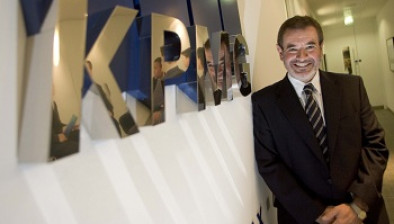SRC & KPMG: Little cheer for Scots stores as December sales disappoint

In a challenging conclusion to 2023, Scottish retailers faced a disappointing December as sales figures revealed a decline in real terms.
Notably, the figures, covering the period of five weeks from 26 November to 30 December, did not account for inflation. With both the December Shop Price Index (SPI) from the British Retail Consortium (BRC) and November Consumer Price Index (CPI) from the Office for National Statistics (ONS) indicating inflation above normal levels, a portion of the sales growth was attributed to rising prices rather than increased volumes.
Total sales in Scotland increased by 1.9% compared with December 2022, when they had grown 11.3%. This was below the 3-month average increase of 2.6% and the 12-month average growth of 6.9%. Adjusted for inflation, the year-on-year decline was 2.4%.
Scottish sales increased by 4.9% on a Like-for-like basis compared with December 2022, when they had increased by 8.9%. This is above the 3-month average increase of 3.9% and below the 12-month average growth of 5.7%.
Total Food sales increased by 5.5% versus December 2022, when they had increased by 11.5%. December was below the 3-month average growth of 6.2% and the 12-month average growth of 11.0%. The 3-month average was below the UK level of 6.8%.
Total Non-Food sales decreased by 1.1% in December compared with December 2022, when they had increased by 11.0%. This was below the 3-month average decrease of 0.5% and the 12-month average growth of 3.4%.
Adjusted for the estimated effect of Online sales, Total Non-Food sales decreased by 1.9% in December versus December 2022, when they had increased by 9.9%. This is below the 3-month average decline of 1.4% and the 12-month average growth of 2.2%.
David Lonsdale, director of the Scottish Retail Consortium, said: “There was little Christmas cheer for Scotland’s retailers as the value of retail sales in real terms dwindled in December. The shine came off the ‘golden quarter’ of trading in the final three months of 2023 as once again what growth there was in sales was outpaced by rising shop prices.
“Despite a surge in last minute festive purchases and discounting by retailers, overall shoppers continued to pare back spending as concerns lingered over the cost of living and higher mortgages.
“The bright spots were toys, gaming consoles, cosmetics, and online purchasing.”
Mr Lonsdale continued: “Grocery sales fared well too albeit December was the weakest monthly performance in food of last year and much of the growth was a consequence of food inflation. Non-food categories overall declined with fashion, household appliances, furniture, and electricals all struggling.
“Sales of Christmas decorations flagged as consumers chose to reuse older baubles rather than splash out on new items.”
He explained: “Christmas is the key trading period for many non-food retailers. It’s when they generate the revenues that tide them over the fallow months early in the new year when sales are lower but when rents, rates and other bills still need paid.
“As the spotlight turns to the year ahead it remains to be seen whether customer confidence and spending will be lifted by reductions in employee national insurance contributions and the council tax freeze.
“What is not in doubt is that many retailers will feel the squeeze from several government-mandated costs rises, and it could be a nail-biting period ahead for some shopkeepers.”
Paul Martin, partner and UK head of retail, KPMG UK, said: “A tough year for the retail sector in Scotland was bookmarked by a fall in growth during December to the lowest level of the year.
“While the festive season allowed for a rise in food sales growth, albeit at the slowest rate of the year, this was the only hopeful note. Despite some rays of light via strong sales in cosmetics and fragrances, due to early discounting, non-food item sales dipped as the cost of living crisis continued to bite.
“We can now only look forward to a stronger 2024 but be cautious of ongoing uncertainties due to a range of factors from upcoming elections to product availability.”









